How to quickly find and seal a hole in the pool
It is impossible to imagine summer without a pool, but not everyone can afford a built-in concrete one. A great alternative is an inflatable or frame pool. The affordable price has influenced the surge in the popularity of such devices not only for children, but also for an adult audience. The assortment is very diverse, various shapes, sizes, designs, depths. You can choose the design in accordance with any request.

But all the joy is lost when the realization comes that the pool is torn. The hole spoils the whole mood, and gives rise to sad thoughts that the deflated structure will have to be thrown away.

In this article we will tell you how to glue a pool, how to glue an inflatable pool, how to glue an Intex frame pool and how long it will take to repair at home.
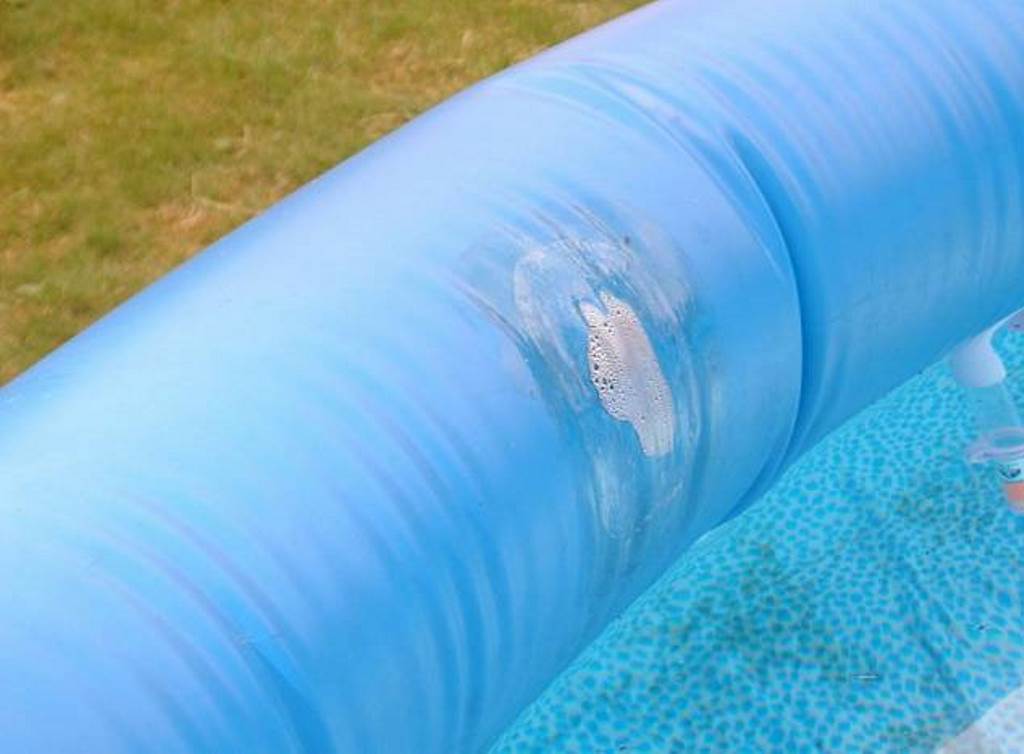
How to find a hole in the pool
When starting a repair, the first step is to determine the location of the defect. You need to understand that there are two types of pools: frame and inflatable. In each of them, a hole is found in different ways. Let's consider the process in detail.

Frame construction
If you suspect damage, make sure there is no water leakage due to natural evaporation.
- Mark the water level on the side of the pool;
- Collect water in a small basin, and also make a mark;
- Compare the water level a day later. If it has dropped by the same distance both in the pool and in the basin, then natural evaporation is the reason for the decrease in water.

If the water level in the pool has dropped more significantly than in the basin, then you need to start looking for a leak.
Perhaps the water leaks not due to the presence of a hole, but there may be a problem with the valve aimed at blocking the exit of water from the structure. If the gasket in the drain hole is not tight, water will naturally seep out.

To find a hole in the bottom, pay attention to whether particles of debris, possibly earth, have gathered somewhere in one place. If there is a leak, then particles will collect in this place that cannot pass through the hole, but were brought to this place by the current.
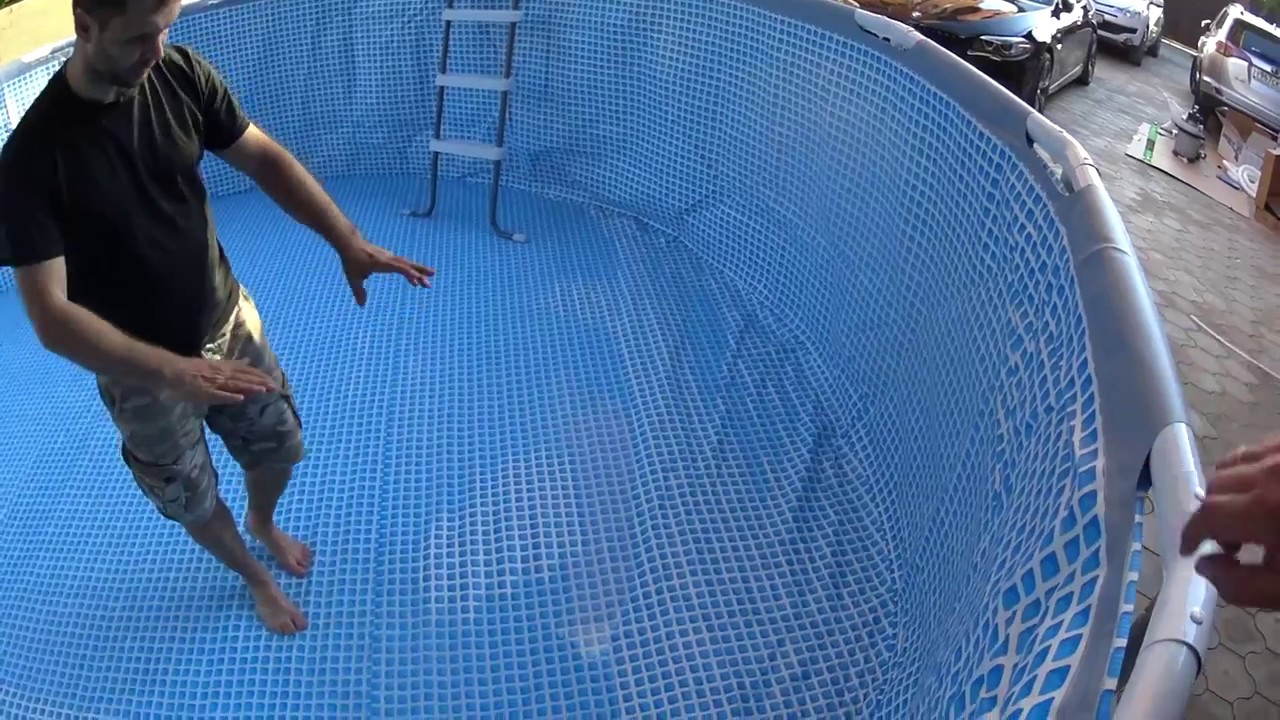
To make it easier to find the hole, start pouring out the water and add dye to it. For example, special dyes are often used for temporary staining in fountains, spas and pools). This will make it easier to find leaks.
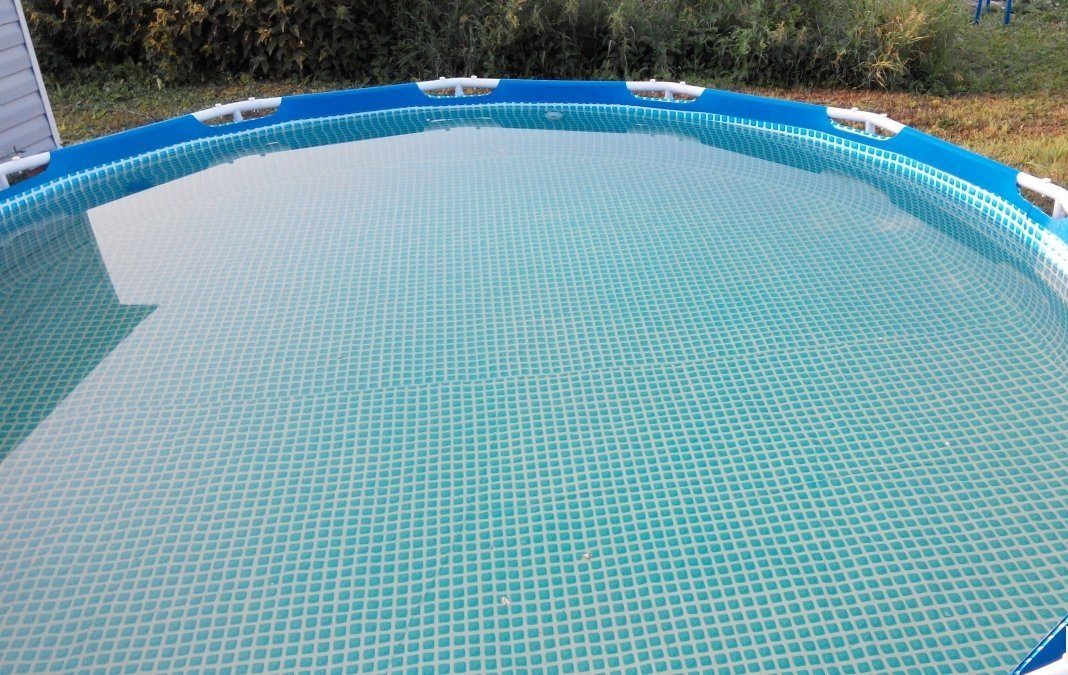
Don't be afraid to drain the water. When you find a problem area to glue it, you need the material to be dry and fat-free.
Inflatable structure
In inflatable structures, leaks are easier to find. It is impossible not to notice a large hole, but small ones are more difficult to detect.

Option 1. Inflate the pool and press lightly on it while moving around the perimeter. The torn area will emit a kind of whistle, as air under pressure will come out of it.
Option 2. Also inflate the pool and press on it with a wet hand. With a damp hand, you will immediately feel the flow of air.
Option 3. The easiest. Inflate the pool and arm yourself with soapy water and a sponge (you can wash dishes) or a spray bottle. Apply a soapy solution with a large amount of foam to the surface. Where the big bubbles start to inflate is what we are looking for.

If you find a hole, mark it with a felt-tip pen, marker or glue something next to it so as not to lose it again.
Pool gluing products
Modern pools are made of PVC material (polyvinyl chloride). The material is very durable and holds its shape perfectly. It is unlikely that the pool can burst suddenly, but it will not be difficult to pierce the material with a sharp object.

Swimming pools can be glued in different ways, mainly different types of waterproof glue are used. But other ways also exist:
- Plaster or tape. The measure is temporary and fragile. But before serious repairs it can last for several hours, maximum one day.
- Special repair kit. A very useful thing. The kit includes: glue and a patch, sometimes the kit has additional tools.
- Waterproof glue. Ideal for gluing PVC materials. Resistant to water.
- There is a convenient solution called "slurry patch". It is a liquid PVC that dries in 10 minutes.

You can always contact a car service or other service centers where the defect can be vulcanized.
How to seal the pool at home
There are several methods that are suitable for repairing a defect in both framed and inflatable tanks. Let's consider them first.

Using a special repair kit, you can glue the hole as follows.
- Two parts must be cut from the patch. One small, evenly covering the edges of the hole, and the second will be needed for the second layer, and its size should exceed the smaller patch by a few millimeters.
- Apply a very thin layer of glue, first to the area around the hole and then to the smaller patch. It remains to glue the patch and the damaged area.
- Glue the patch carefully, smooth all the edges. Place under the press for a few minutes.

Note! Repair kits are attached to Intex products upon purchase. Therefore, the owners of goods of this brand will not have to select a repair method for themselves. The most convenient repair option will already be in his hands.
If you decide to repair the pool yourself using water-repellent glue, then use the following method.

When buying glue, make sure that the glue contains polyvinyl chloride, thanks to which the glue becomes moisture resistant.
- After finding a hole, rub the area around the hole with sandpaper. The goal is to make the surface a little more uneven and rough, so that the bookmark and the damaged area are better glued.
- Degrease the surface area you need.
- Apply a thin layer of glue to the patch and to the pool surface. Do this very carefully so that the glue does not go outside the patch. Otherwise, any other parts may stick to the pool, later peeling them off, you can damage the rubberized surface again.
- The press may not be needed. The glue dries up in a few minutes.

"Liquid patch" is applied as follows:
- Degrease the area around the damage.
- Pour in the liquid patch gently.
- Leave to dry for 10 minutes.
- Apply a second coat. Let it dry.
The color of the liquid patch can be matched to the color of the product.

After completing the repair, you need to check if everything went well. To do this, a soapy foamy solution is applied to the repaired surface and the pool is pressed. If bubbles begin to appear, it means that it was not possible to properly seal the defect for some reason. Repeat the procedure again.

Inflatable
All of the above methods will help to eliminate damage to the inflatable product. But this type of pool has its own specifics, they sometimes break at the seam. Let's see how you can fix this defect.

Isolate the damaged area from water. Degrease (with alcohol, vinegar, but not solvent), glue well the two sides adjacent to the seam with glue, and firmly connect them with oppression. Leave in this position for a day.
Wireframe
The frame pool can also be easily sealed using all of the above methods. And only one temporary measure cannot be applied to the inflatable, but only to the frame structure.

How to seal the pool with tape or plaster? The inflatable pool cannot be sealed with tape, but the frame one, due to its rigid structure, can be temporarily adjusted by this method.
- Determine where the damaged area is.
- Mark the puncture site with a marker.
- Wipe dry the area around the hole, degrease. You can degrease with ordinary ethyl alcohol, cologne, acetone, solvent - whatever is at hand.
- Stick the tape.

PVC
PVC pools should not be repaired with super glue, as it is not compatible with PVC material. Using super glue can make the problem even worse.
Underwater pool sealing
In case your pool is very large and it is simply not possible to drain all the water at the moment, and you found the hole under water, that is, a temporary urgent measure. Placement of patches outside and inside. Purchase an adhesive repair kit from a sports store. The composition includes an adhesive tape, one side of which is covered with water-repellent glue.
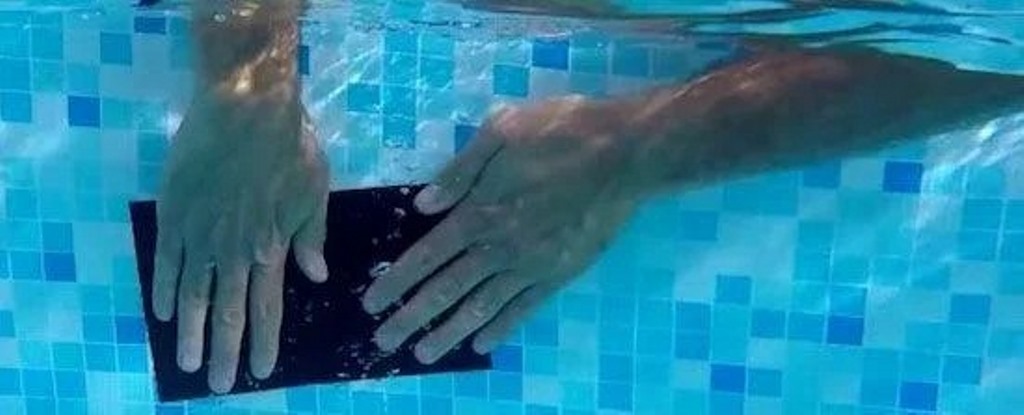
Important! First, you need to stick a tape of the required size inside the pool to stop the flow of water.And then from the outside
Repair of pools Intex (Intex)
Now let's look at how to glue an Intex pool at home. Intex tanks are made of polyvinyl chloride or rubberized material. A repair kit is attached to the Intex product when purchasing. If it is not there, purchase it from the store. The company of the set corresponds to the brand of the product - Intex.
The set consists of three patches 15 * 50 cm in size, 50 ml PVC glue and two pairs of special gloves.

The procedure is as follows:
- Drain the water tank. Wipe the damaged area dry.
- A section of the required size is cut from the patch. The cut patch should protrude about 2 cm beyond the damage on all sides.
- Degrease the surface with alcohol or another suitable solution and wait until it dries completely.
- Apply a thin layer of glue to the patch and attach it to the inside of the pool. Do the same with the outside.
- Put the load on the sealed area for a day. So that the glue is completely dry and firmly glued all the patches.
Safety at work
To avoid damage, you must familiarize yourself with the safety measures and operating rules for inflatable and frame pools.
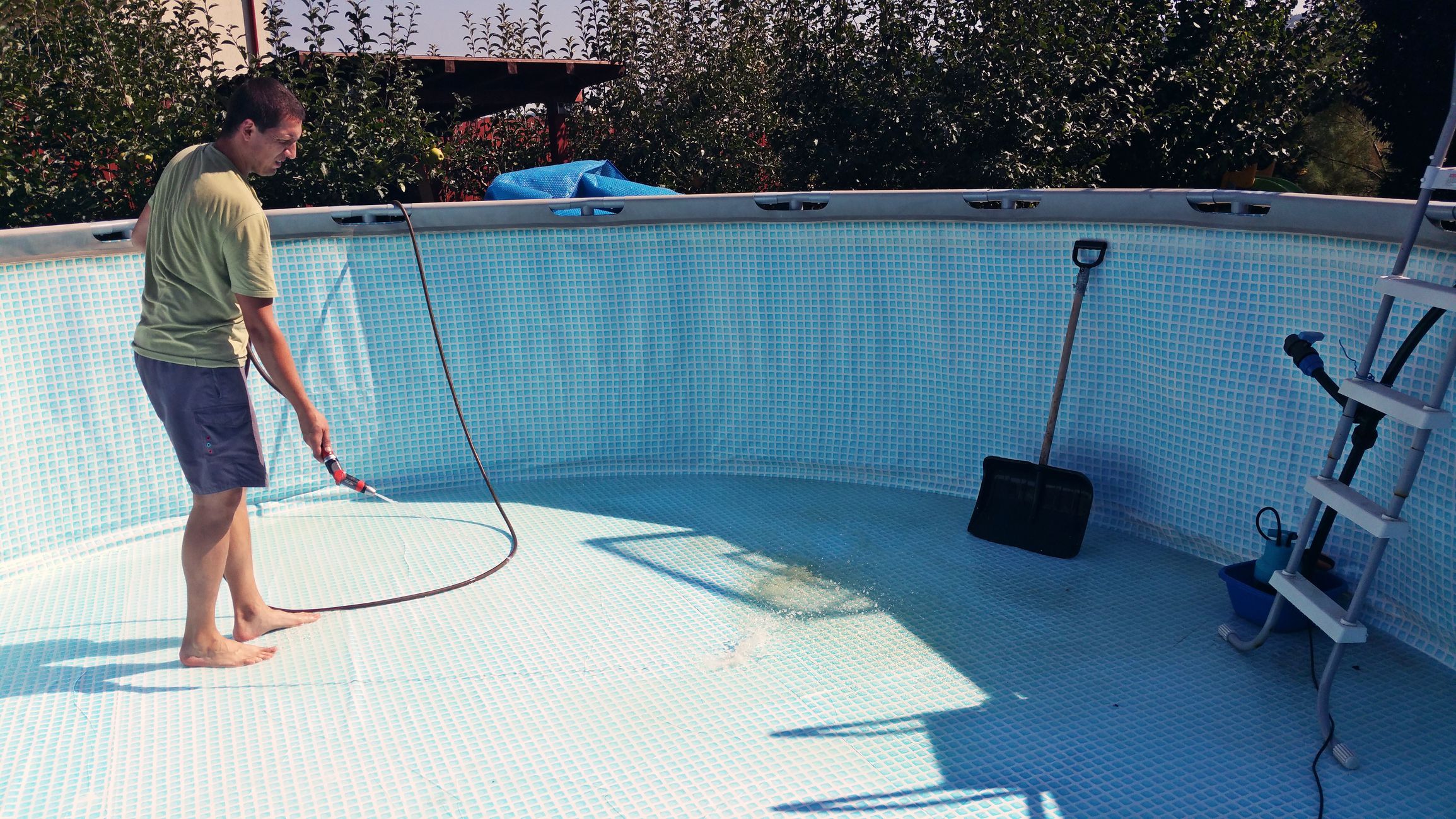
- The structure should only be placed on a flat surface. There should be no irregularities in the form of tree roots, stones or other hard and sharp objects.
- Do not fill the pool with anything other than clean water. It is forbidden to fill the product with plastic baby balls, toys and other loose objects.
- It is also forbidden to dive into the water from a height, since under pressure the walls of the tank may not withstand and burst.
- At the end of use, the pool is cleaned, dried, deflated (disassembled), and when folded is stored in a warm place until the next season. Necessarily in a warm place, as the "pool" material begins to deteriorate at sub-zero temperatures.
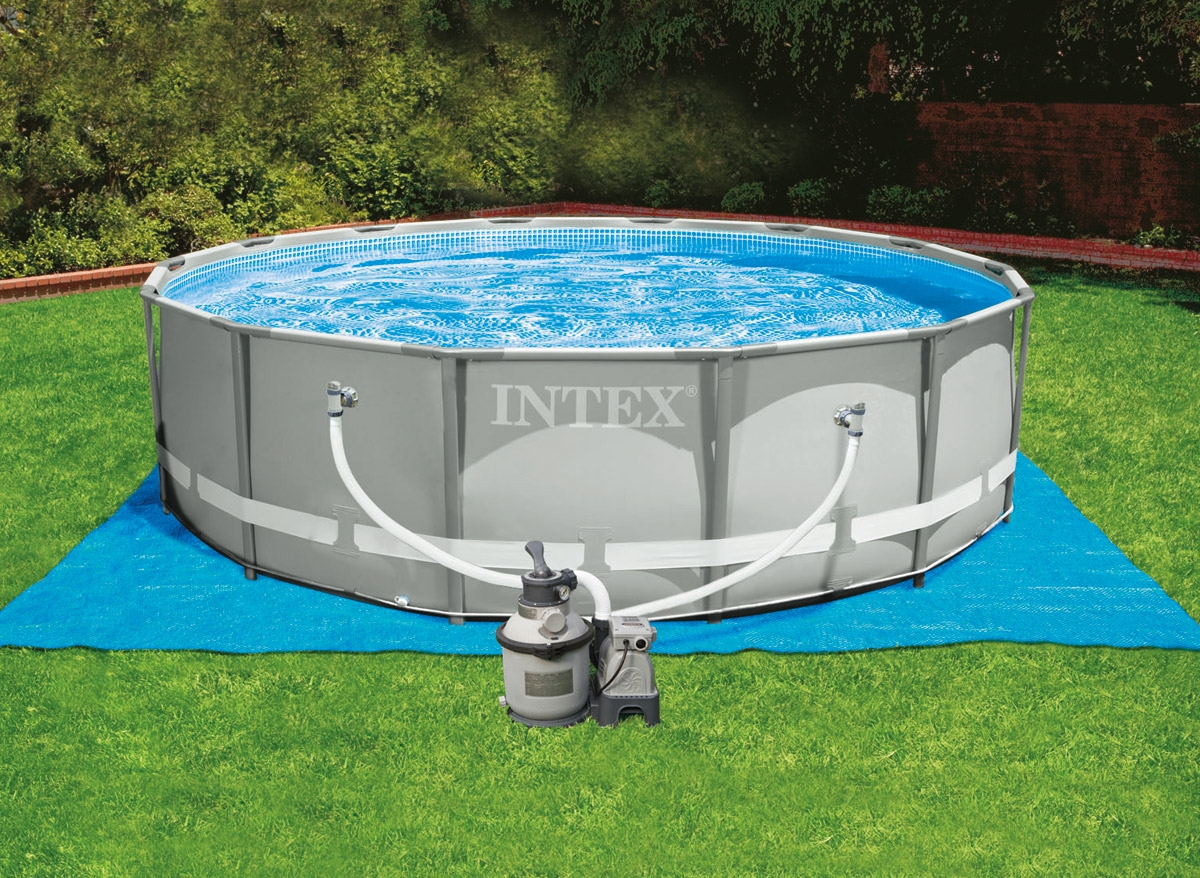
VIDEO: How to glue the Intex frame pool.





